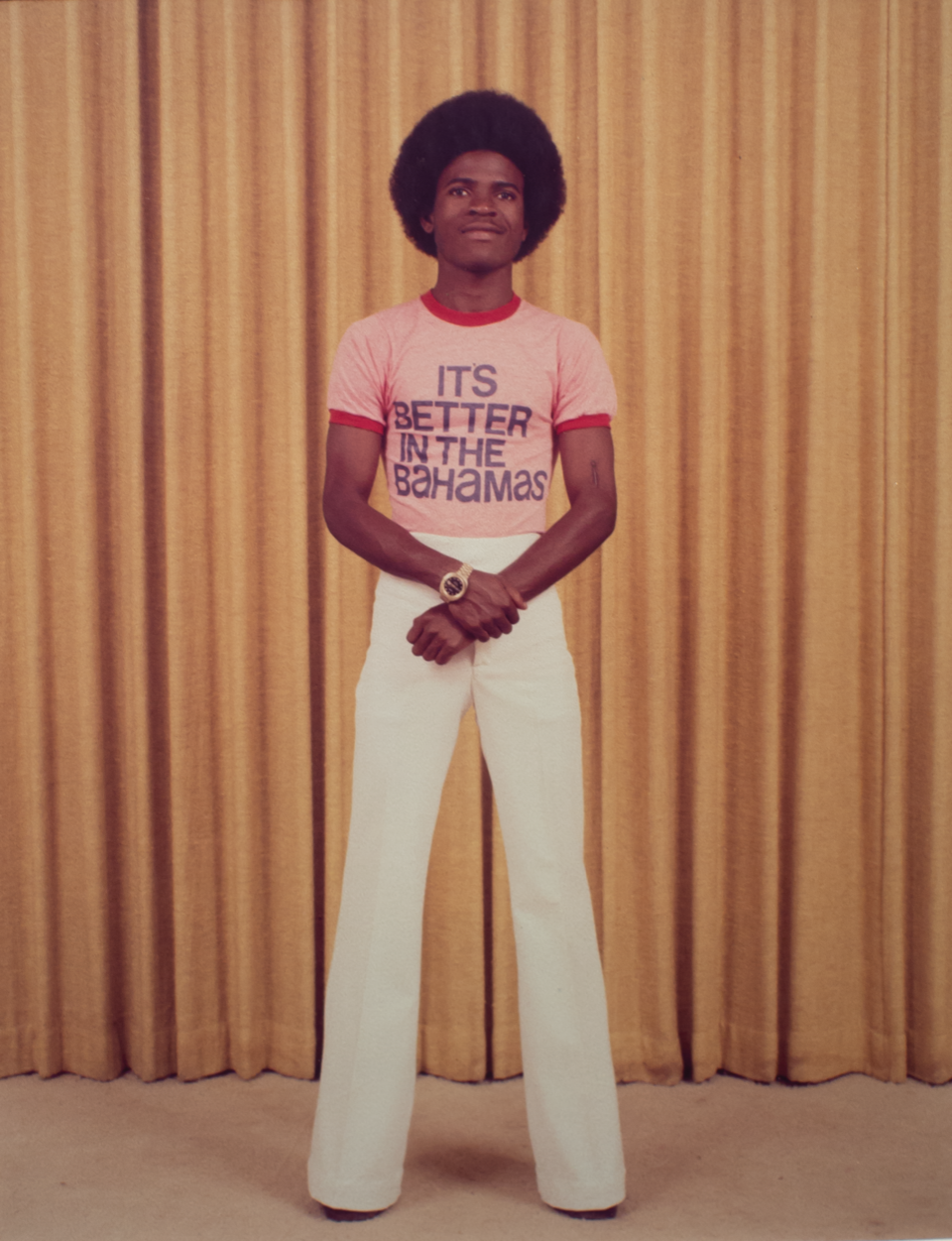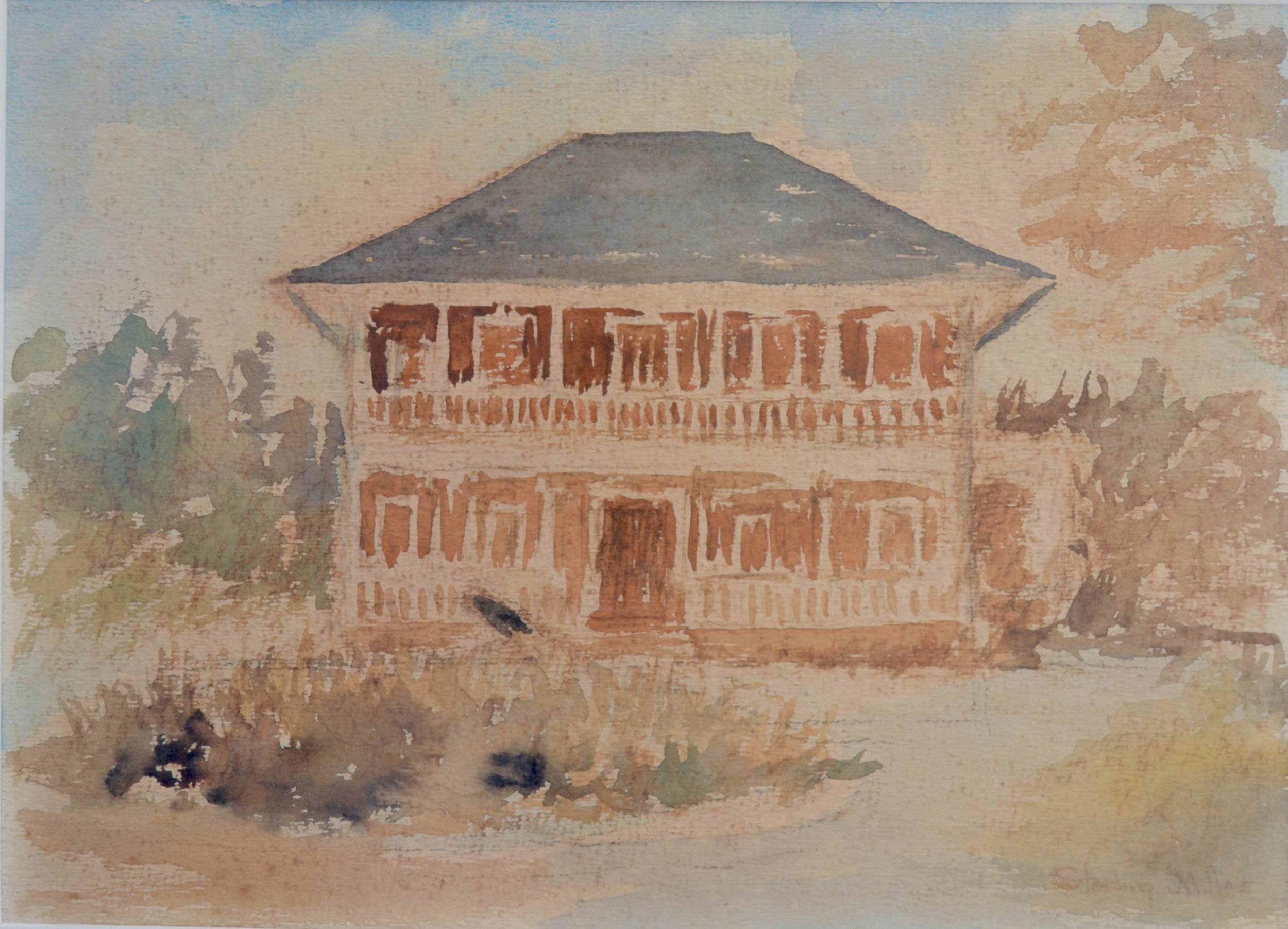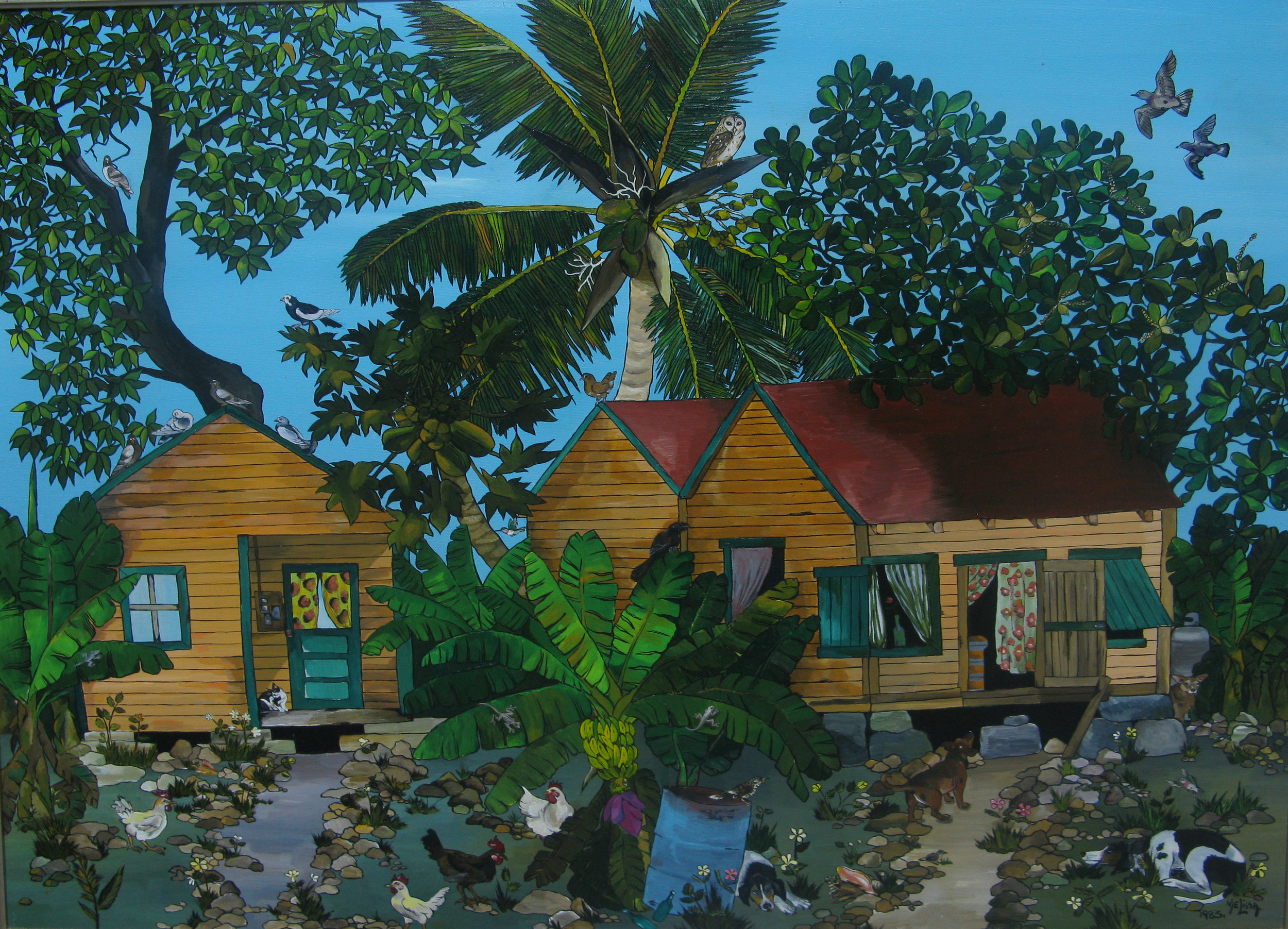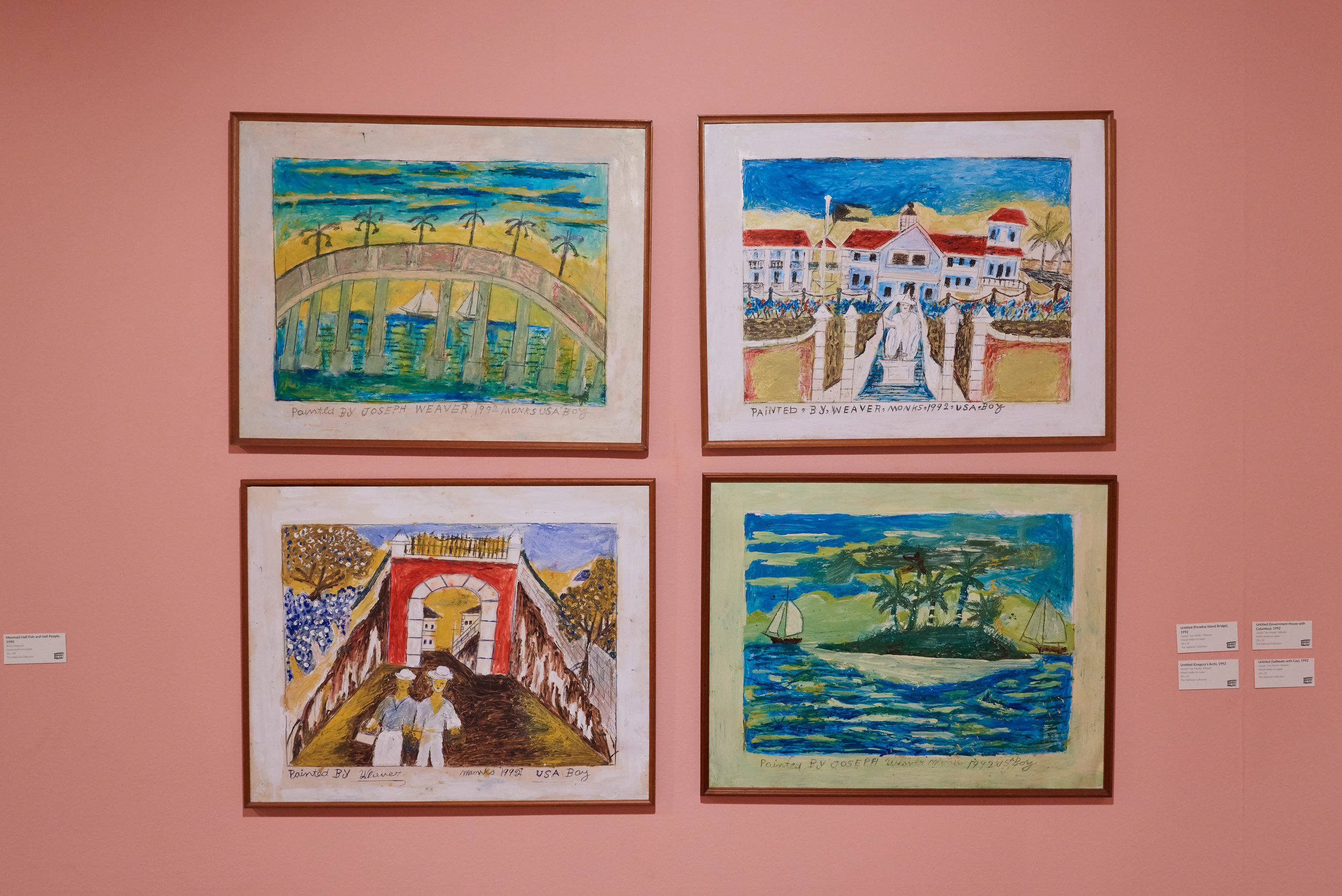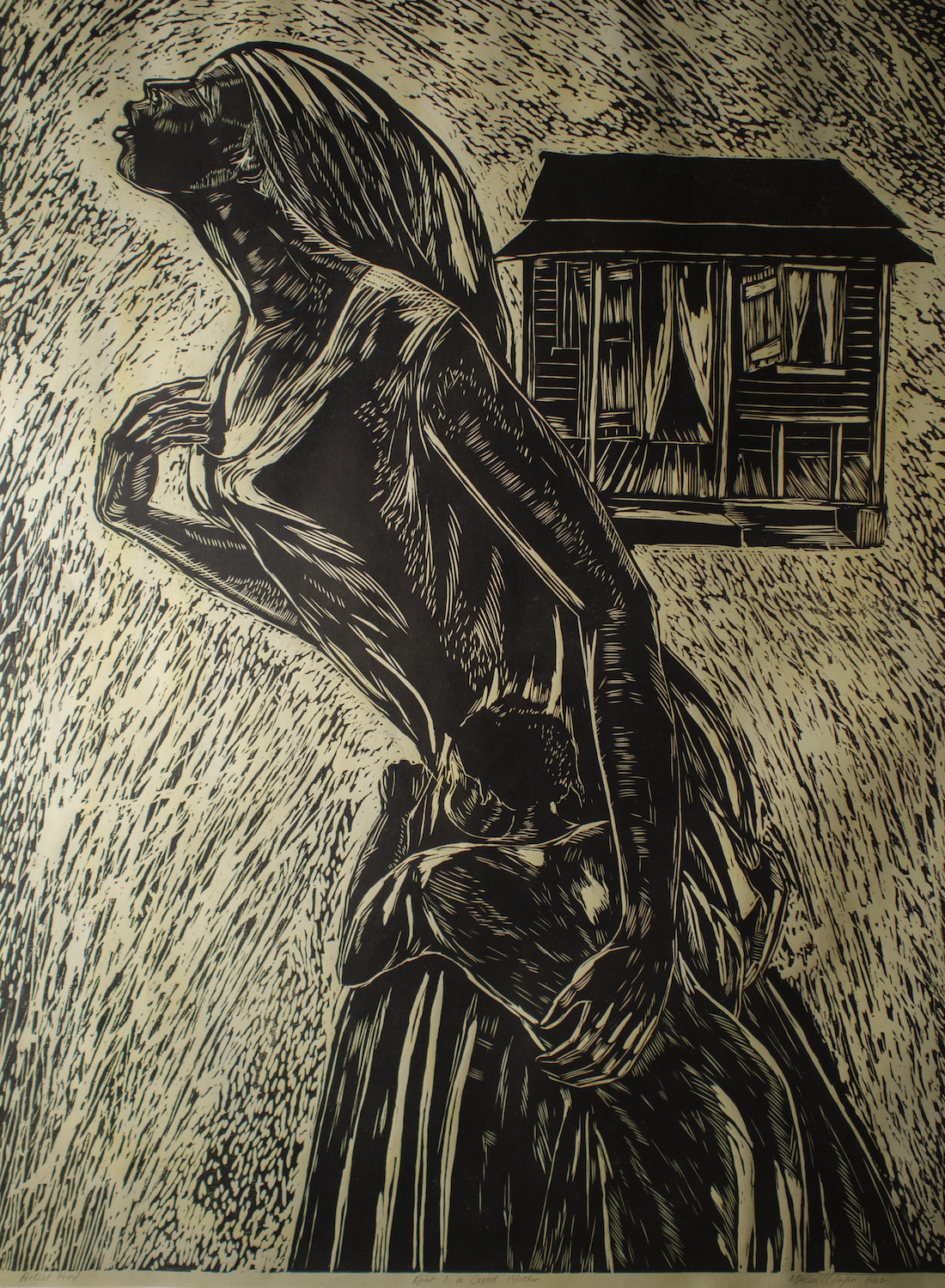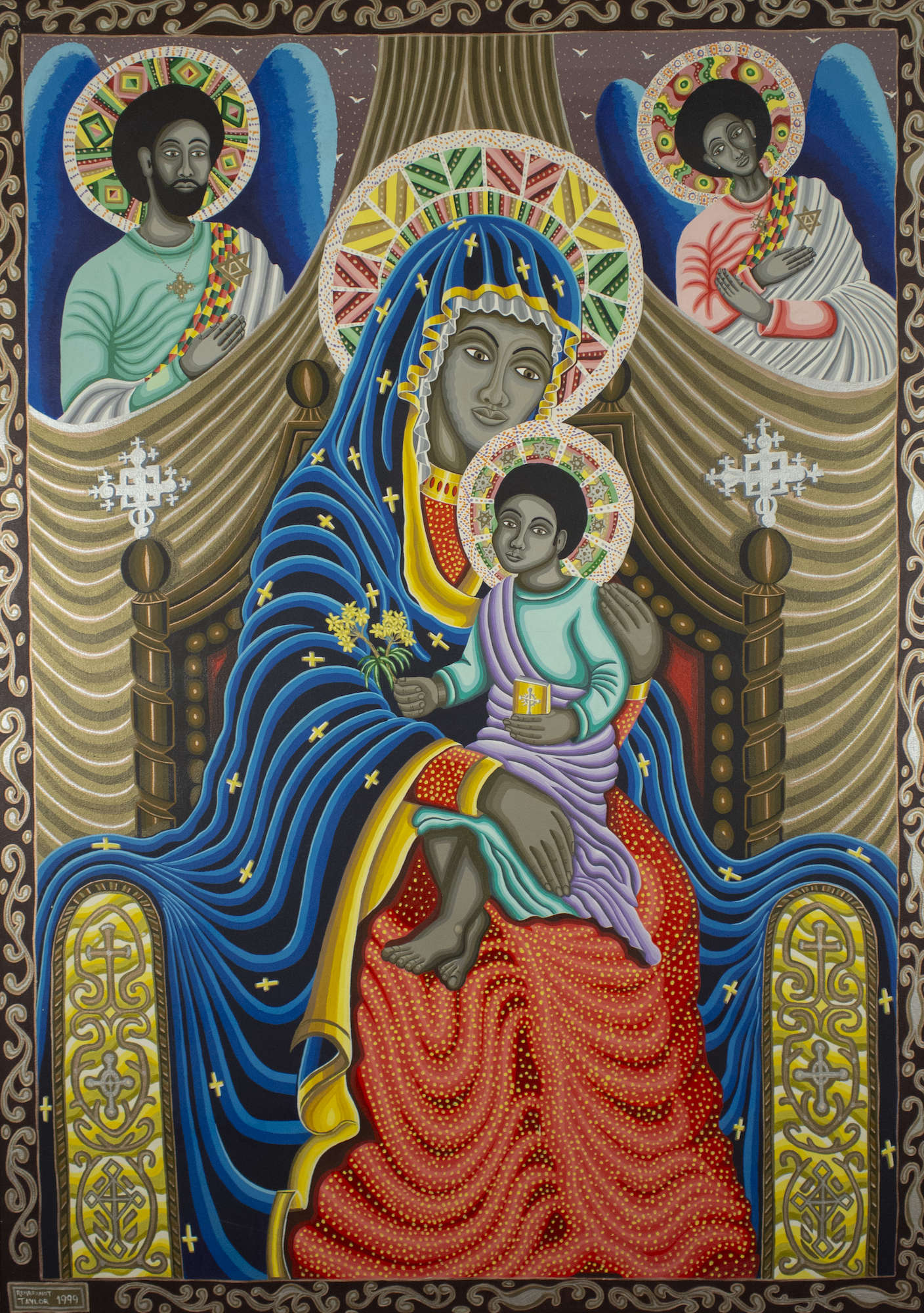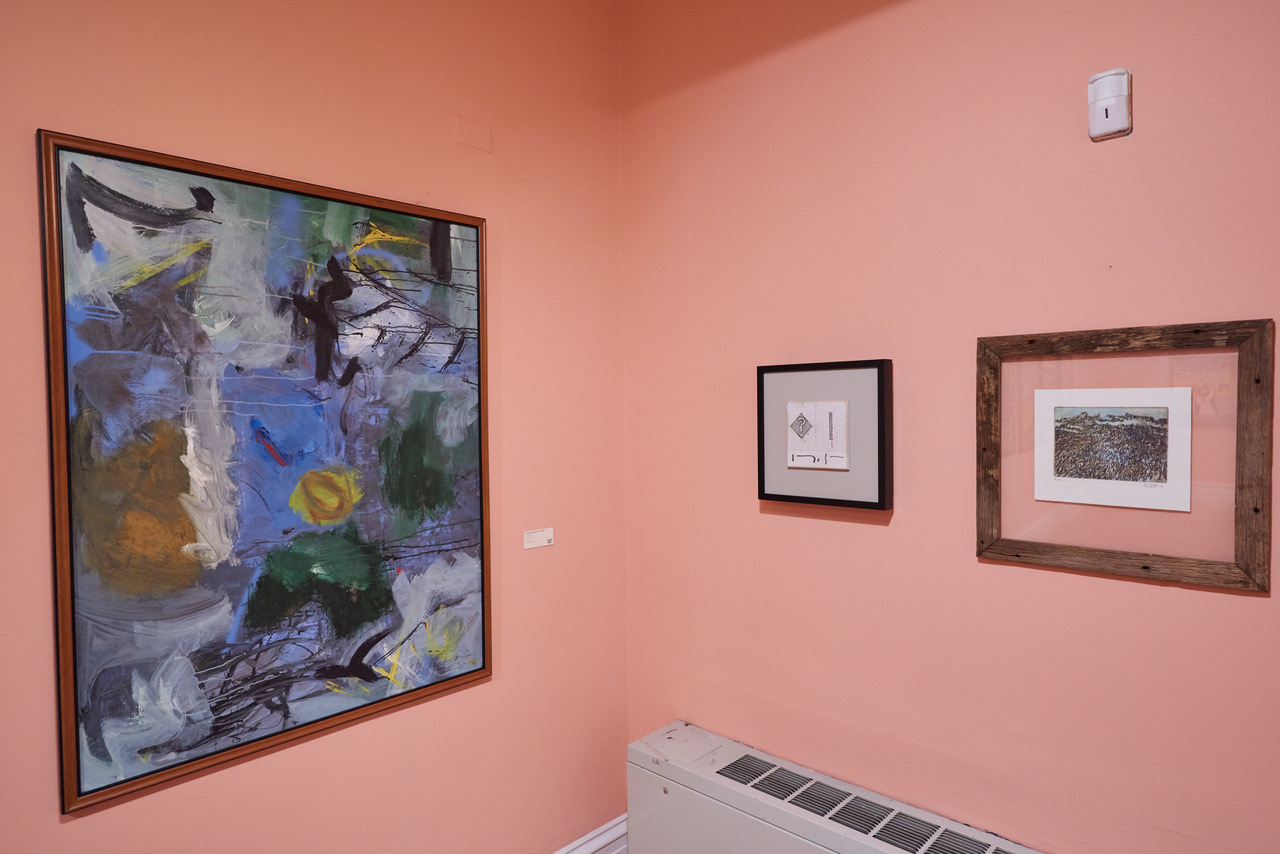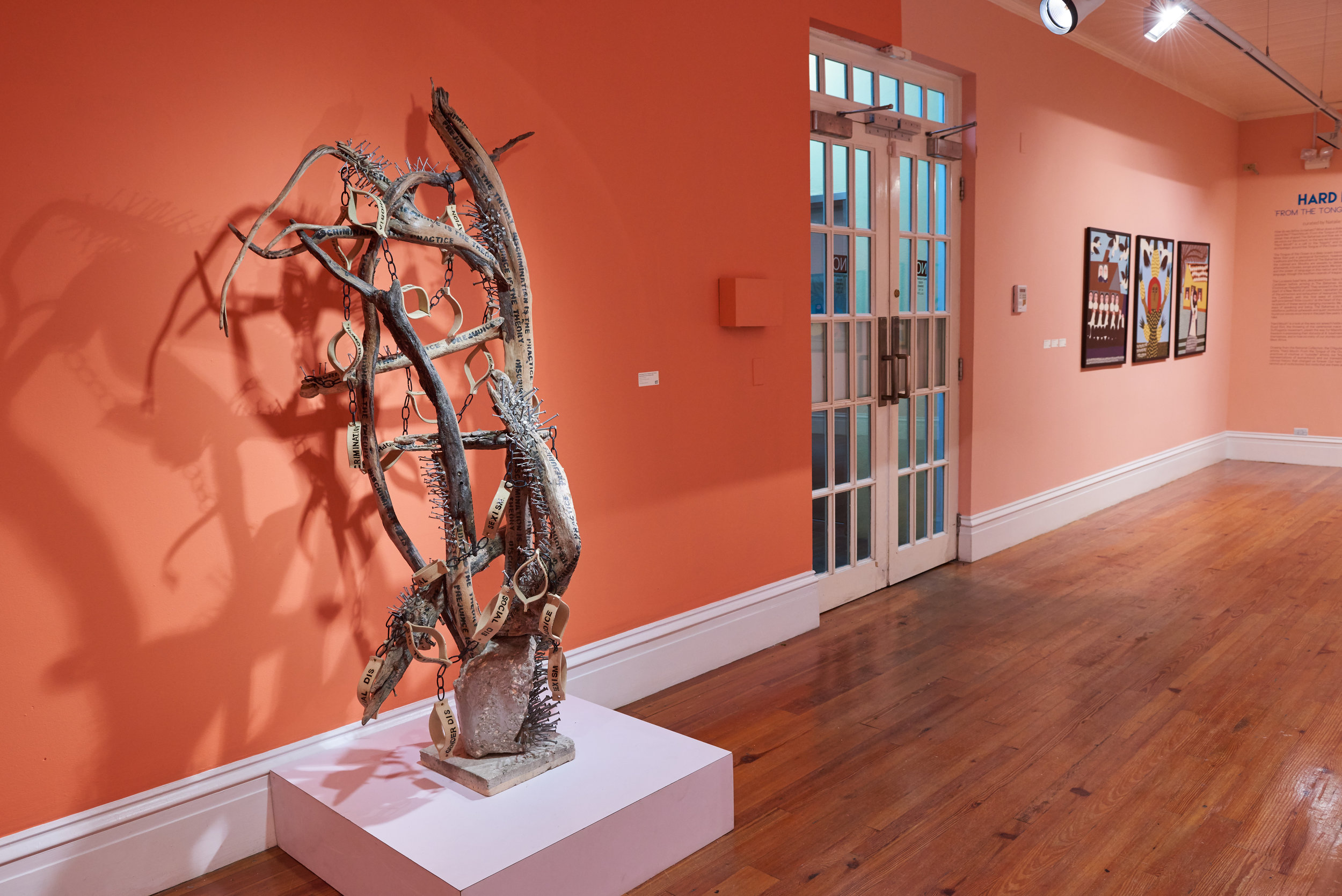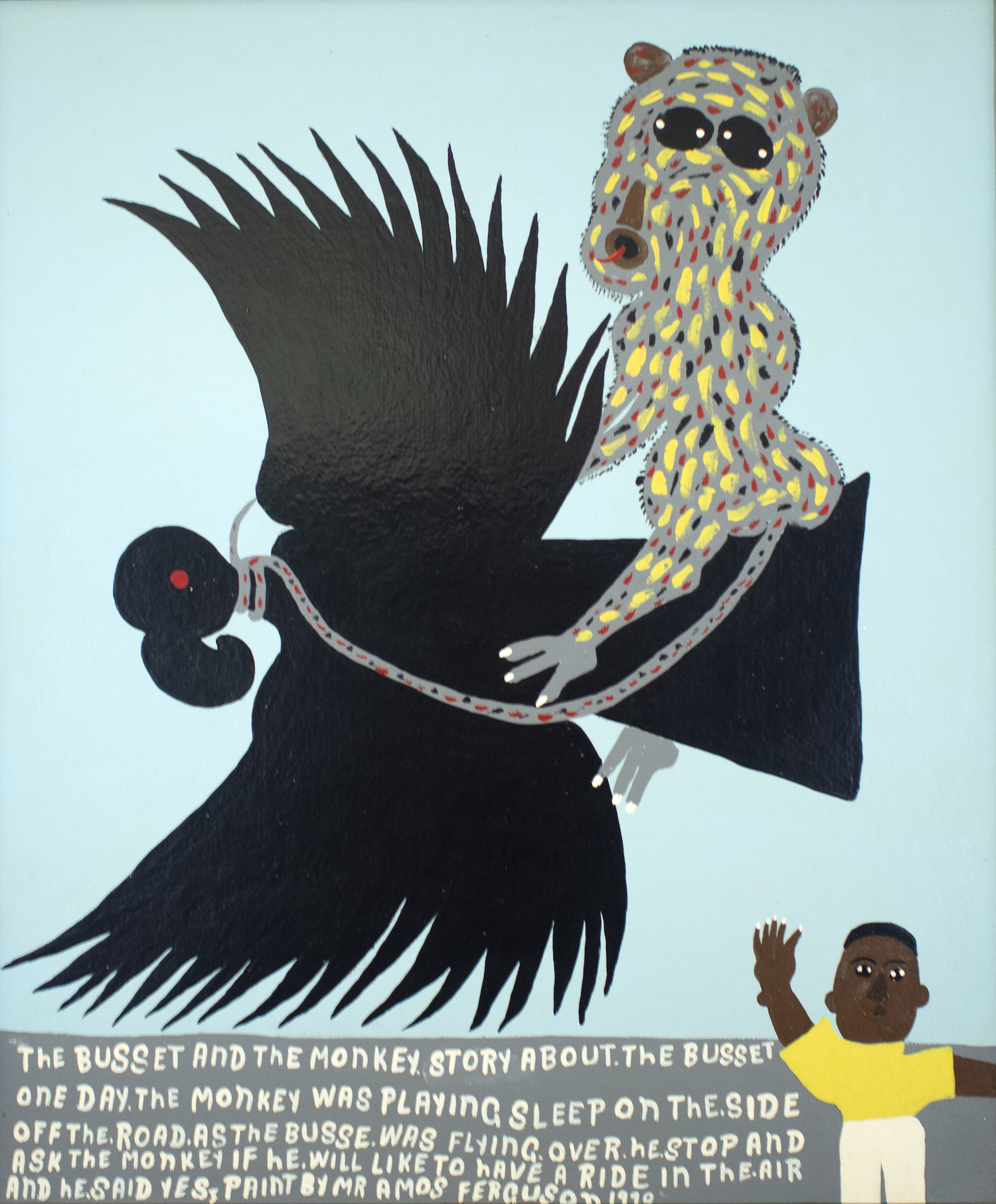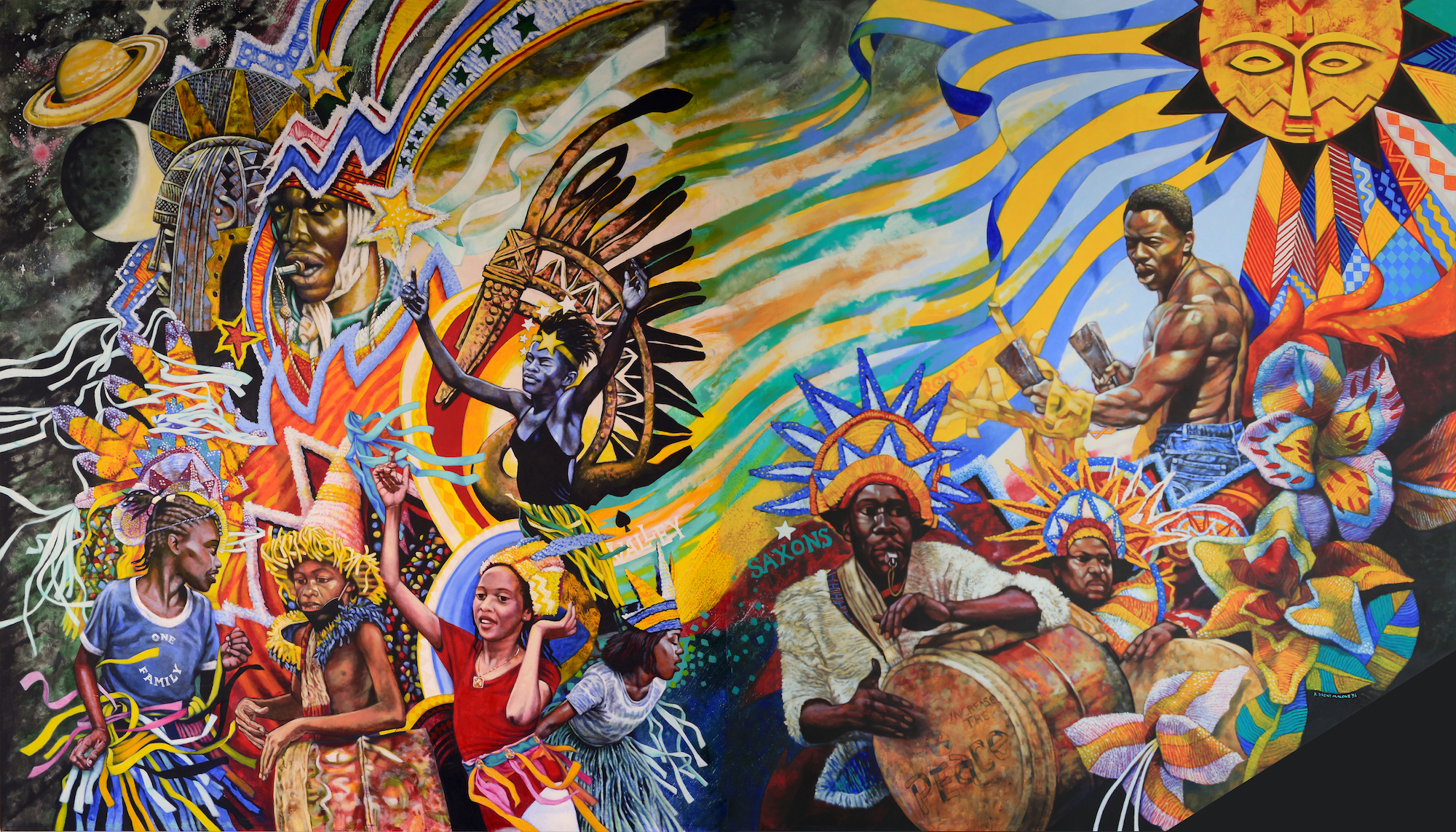Historical photographs show Bahamians claiming and embracing their African heritage. Aptly named, these photographs show us a period in our history where Bahamians were pointedly claiming and embracing their Blackness. This sense of pride was born out of, but not limited to America’s expressions of Black power during the Civil Rights Movement, the road to Majority Rule in 1967, and The Bahamas’ independence in 1973.
Currently browsing: Collection
Demure Facade, Colourful History: Sterling Miller’s “Villa Doyle” (ca. 1969)
Stories Demure Facade, Colourful History: Sterling Miller’s “Villa Doyle” (ca. 1969) Natalie Willis · 3 July 2019 The Villa Doyle,
“Wellington Street Dwelling”: Exploring the Bahamian Vernacular
By Kelly Fowler, Guest Writer. An island landscape in the mind of a non-native may include picturesque coastal scenes of blue and turquoise shaded waters gradually transitioning to crystalline, onto shallow shores of powder white sandy beach, and further to lush foliage of coconut and palm trees. To the native Bahamian, the island landscape may vary considerably. The landscape may range anywhere from the quintessential narrow, yet neat streets featuring well-kept, board houses nestled among vibrant Bougainvillea, Poinciana and golden shower trees, to scenes of markets, daily life and the historic Over-the-Hill community where centuries-old silk cotton grow, fruit trees flourish and royal Bahamian potcakes roam freely. Both the outsider’s notion and the insider’s experience are represented in Bahamian art. Melissa Maura’s 1983 oil on canvas painting entitled Wellington Street Dwelling is a glimpse into an insider’s experience of island life and landscape. The painting draws the viewer into the lived experience of the native Bahamian and invites the onlooker to reflect on the diversity of the island landscape and how the landscape has changed over time.
Dialect and Diaspora: The Intuitive Art of Joseph “Joe Monks” Weaver
By Natalie Willis . As the current Permanent Exhibition, “Hard Mouth: From the Tongue of the Ocean” comes to a close next month, it’s an apt time to review one of the key themes that resonated with many during our tours and casual chats here at the museum. We love to speak about how special, confusing, and linguistically interesting our Bahamian dialect is, but one of the questions posed in this exhibition in the section titled “Dialeck” [sic] gives us a moment to think on what our visual dialect could look like. When we look at the work of intuitive artists such as Amos Ferguson, Netica “Nettie” Symonette, or Joseph “Joe Monks” Weaver, we see just that – people who move beyond the “proper grammar” of Eurocentric art history and the canon of art practice, choosing instead to communicate in an art dialect of their own making.
From the Collection: “Ain’t I A Good Mother?”
By Kelly Fowler, Guest Writer. Maxwell Taylor honours Black Bahamian mothers. As with many things, the concept of motherhood does not always translate neatly or equally cross-culturally. While it is not unusual for a society to have defined gender roles and to encounter expectations based on them, women of marginalised groups tend to face harsher criticism of their lifestyles for not meeting the concept of womanhood or motherhood that is associated with the “ideal.” Naturally, this would lead to feelings of inadequacy and questions of being good or good enough. Bahamian master artist, Maxwell Taylor, delves into this subject matter in much of his work, but his black and white woodcut print on paper entitled Ain’t I A Good Mother?, 2003 is one that addresses Black motherhood specifically.
From the Collection: Rembrandt Taylor’s Madonna and Child
The Role of the Arts in Addressing Climate Change
By Blake Fox. Currently on display through June 2, 2019, at the National Art Gallery of The Bahamas (NAGB), the Permanent Exhibition “Hard Mouth: From the Tongue of the Ocean” focuses on how both verbal and visual language have shaped us as a country. One could argue that The Bahamas is a phonocentric culture, meaning speech is given precedence over written or visual work. Because of this emphasis on speech rather than written or visual work, it is no doubt that The Bahamas has a very rich oral culture. While Bahamians rely heavily on oral communication to pass down culture and traditions, visual and written works are just as crucial in communicating cultural beliefs and values in societies. This exhibition highlights Bahamian artwork that serves as a conduit to bridge the gap between our visual and oral culture in The Bahamas.
To Heal We Must Remember: Katrina Cartwright’s power figure uproots the past
By Letitia Pratt. It is a hopeful mission of the African diasporas to heal the ancestral pain that Black peoples have inherited. This healing will only come to us in the process of remembering. One of the primary ways to initiate this process is through the creation and consumption of art, which invites us to remember the past, take stock of the present, and come to terms with the complex histories that influence our current experiences as Black people. This process is especially needed for Black Bahamians, whose past traumas shape how we view ourselves. It is incumbent on our ability to tell truths about our past: we must recall times of slave rebellions, punishments, uprisings and revolts. We must remember the slaves that escaped the tyranny of Lord Rolle of Exuma – only to be recaptured and severely punished – and remember the tragedy of Poor Kate of Crooked Island who died from torture in the stocks for seventeen days. (The Morning Chronicle, 1929). It is these stories we need to remember. These are the stories that shaped our ancestors. These are the traumas we need to heal from. Katrina Cartwright’s Nkisi/Nkondi Figure: Prejudice is the Theory, Discrimination is the Practice, (2012) does just that: It forces us to remember, and it inspires us to heal.
From the Collection: “The Bussett and the Monkey” (1991) by Amos Ferguson
The musical stylings of Bahamian favourite Phil Stubbs, no doubt inspired by the Nat King Cole classic, in this story of the monkey and the buzzard, speak to fable, myth and reality. Amos Ferguson was also quite clearly inspired by this story, as we see in his painting “The Bussett and the Monkey” (1991), currently on display in central Andros as part of the NAGB’s Inter-Island Traveling Exhibition “TRANS: A Migration of Identity”.
UBS Donates a National Treasure: The NAGB and the Bahamian people inherit a Malone masterpiece
By Malika Pryor-Martin. Art is a wondrous thing. It calls forth memories while speaking to our future self. A technician will produce something beautiful. A visionary – something transformative. R. Brent Malone was and accomplished both. He took Junkanoo, what he saw and correctly knew to be a rich, nuanced and electric expression and elevated an (already exquisite) art form, which for too many had been woefully under-appreciated and even mocked. Thanks to a recent act of incredible largesse by UBS, the NAGB was fortunate enough to add to the people’s collection, the National Collection. As Mary Rozell, Global Head UBS Art Collection, shared in a statement, “We are pleased to donate the Brent Malone mural, “Celebration: Spirit of Junkanoo”, originally commissioned for the lobby of the UBS office in Nassau, to the National Art Gallery of The Bahamas to make it available to the broader public in this region.” This massive canvas captures the movement, spirit and fiery intensity of the festival and the NAGB could not be more elated to announce this excellent news.
